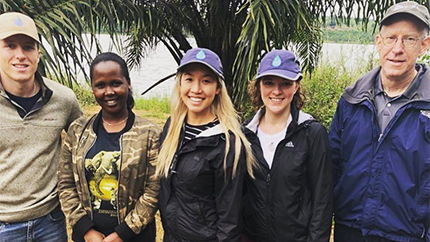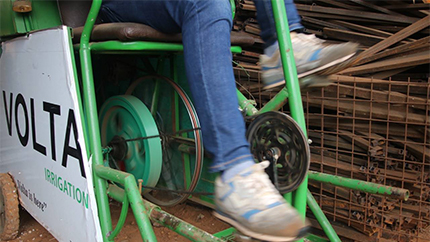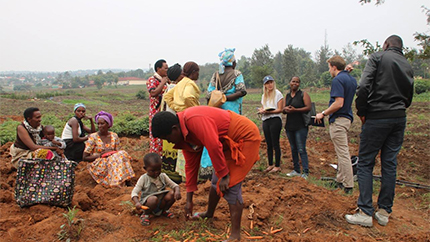At just over 25,000 square kilometers (10,000 square miles), Rwanda is one of the smallest countries in the African continent. Despite its history of conflict and genocide, Rwanda is now working toward innovation, security and stabilization, led in part by its government’s strategic initiatives.

Since smallholder farmers currently represent more than 70 percent of agricultural activity in Rwanda, the future of food security, and the resulting increased incomes, depends on the country’s ability to produce more crops with the same amount (or less) of resources. A key component of the government’s solution to this challenge is to double the amount of irrigated land.
On a recent trip to the "land of a thousand hills," we visited rural farmers and farmer cooperatives to explore which business models they currently employ for irrigation and the trials and successes of each. Cost-effective scaling of smallholder irrigation could unlock significant potential for increased crop production and result in a more stable income for the bulk of the population. While a more formal, in-depth report will be produced with our team’s findings, below are some models we explored in the country.

One co-op comprised mostly of women pumped water from a local lake to a tarped ditch near their fields. They then used an engine to pump water through a handheld hose used to water the crops. While this is more efficient than using watering cans, the system is dependent upon fuel, which the farmers cannot always afford.
One smallholder farm used small scale irrigation technology (SSIT) to irrigate corn and other crops during the dry season. The farmers are part of a co-op that pools its harvest earnings to pay for 50 percent of the petrol-driven sprinkler irrigation system. The Rwandan government subsidizes the other half. Each time the farmers would need to irrigate, they would carry the system of tubes and sprinklers to the field, connect it and then carry it back to storage to avoid theft. They system is tedious but allows them to plant and harvest an extra season and increase their income.
We also spoke with a smallholder farmer co-op using shared center pivot irrigation and a student start-up, Volta Irrigation, that has designed a bicycle-powered irrigation system. By pedaling the bicycle, energy is stored in a motor for later use to irrigate. While the irrigation-as-a-service model has been well received by farmers, the company only has one machine. They hope to scale in order to meet the demand, but at $2,000 per machine they have trouble doing so quickly. A key advantage to Volta’s system is that it is human-powered and avoids the high cost of fuel needed by other engine-powered irrigation solutions.

Regardless of the method, smallholder farmers in Rwanda are generally excited about the future implementation of irrigation and the difference it can make to their income and quality of life.

